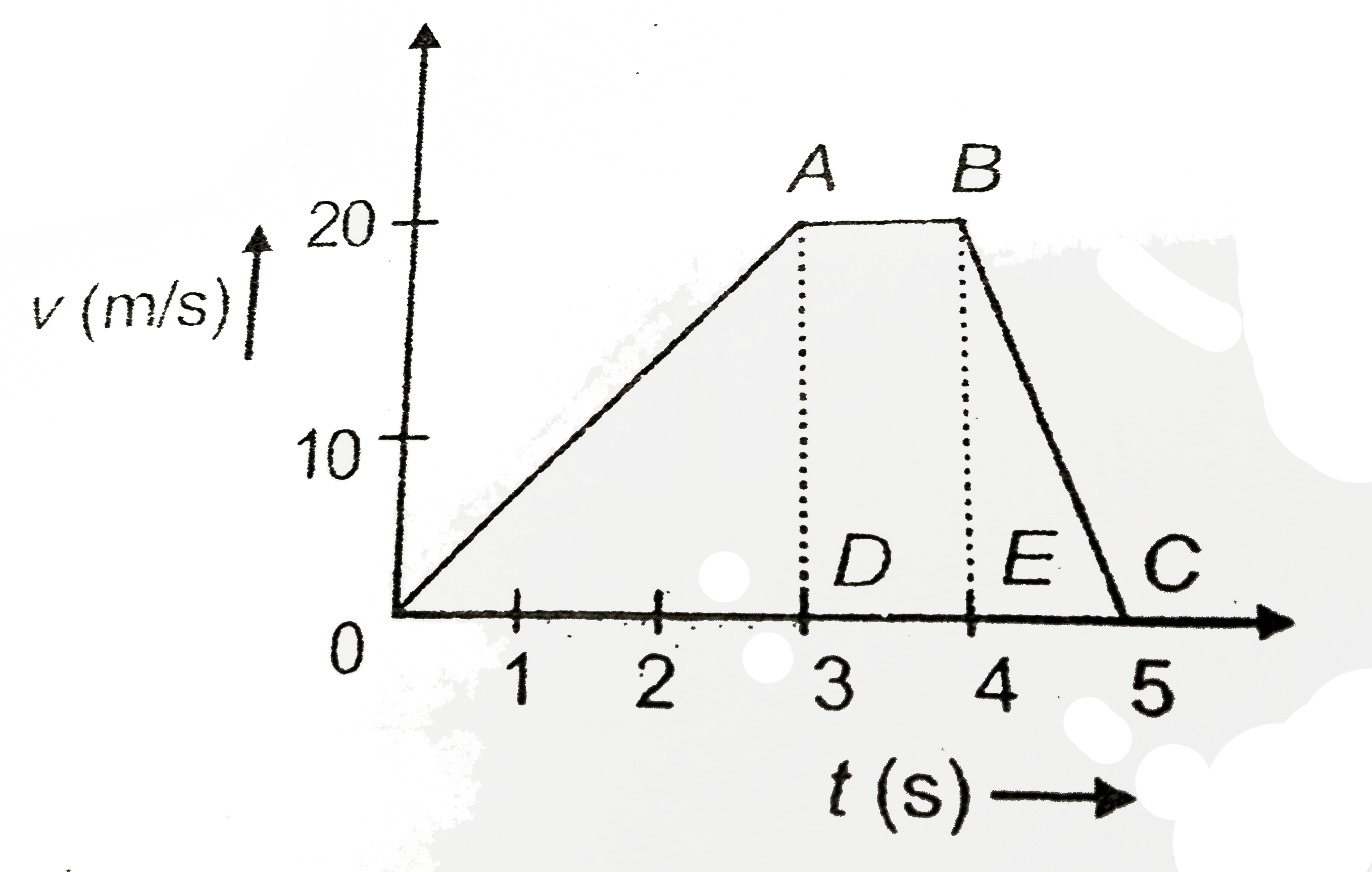A particle is in motion along a straight track. As it crosses a fixed point a stop- watch is started. The particle travels a distance 180 cm in the first 3 s and 220 cm in the next 5 s. What will be its velocity at the end of ninth second ?Solution in Bengali
The correct Answer is:30 cm.s−1
Step by step video, text & image solution for A particle is in motion along a straight track. As it crosses a fixed point a stop- watch is started. The particle travels a distance 180 cm in the first 3 s and 220 cm in the next 5 s. What will be its velocity at the end of ninth second ? by Physics experts to help you in doubts & scoring excellent marks in Class 11 exams.
Topper's Solved these Questions
- BOOK - CHHAYA PUBLICATIONCHAPTER - ONE - DIMENSIONAL MOTION EXERCISE - Problem Set - I (Based on Vertical Motion )11videos
ONE - DIMENSIONAL MOTION
- BOOK - CHHAYA PUBLICATIONCHAPTER - ONE - DIMENSIONAL MOTION EXERCISE - Problem Set - II (Based on Speed, Velocity and Acceleration )4videos
ONE - DIMENSIONAL MOTION
- BOOK - CHHAYA PUBLICATIONCHAPTER - ONE - DIMENSIONAL MOTION EXERCISE - Problem Set - I (Based on Speed, Velocity and Acceleration )10videos
ONE - DIMENSIONAL MOTION
- BOOK - CHHAYA PUBLICATIONCHAPTER - NEWTONIAN GRAVITATION AND PLANETARY MOTIONEXERCISE - CBSE SCANNER19videos
NEWTONIAN GRAVITATION AND PLANETARY MOTION
- BOOK - CHHAYA PUBLICATIONCHAPTER - QUESTION PAPERS OF NEET -2017EXERCISE - QUESTION32videos
QUESTION PAPERS OF NEET -2017
Similar Questions
A piece of stone is dropped from a height of 19.6 m. What will be the time required for the stone to cover the last metre of its path? [ g = 9.8 m.s−1]
05:28View SolutionAn athIete covers a circuIar path of radius 70 m in 55 s and returns to the starting point. Find the magnitude of his aevrage speed and averge velocity. If he compIetes the Iast 40 m of the path at the same rate in 4 s, find the vaIue of instantaneous speed and velocity in that intervaI of time.
01:41View SolutionA car moves with a speed of 30 km.h−1 in half of the total time taken and with 40 km.h−1 rest of the time, What is the average speed of the body?
01:43View SolutionWhat is the reason for absence of atmosphere in some planets?
10:40View SolutionA molecule of a substance has permanent dipole moment p . A mole of this substance is polarised by applying a storg electrostatic field E . The direction of the field is suddenly changed of 60∘ . If N is the avogadro's number the amount of work done by the field is
02:37View SolutionA body is in motion along a strainght line. As it crosses a fixed point a stop watch is started . The body travels a distance of 1.80m . In the first 3 second and 2.20 m in next 5 seconds. What will be the velocity at the end of 9 second ?
07:39View SolutionThe variation of velocity of a particle moving along a straight line is as shown in the figure given below. The distance travelled by the particle in 5 s is
 02:58View Solution
02:58View SolutionA particle moves along a straight line according to the law s=16−2t+3t3, where s metres is the distance of the particle from a fixed point at the end of t second. The acceleration of the particle at the end of 2s is
02:32View SolutionA particle starts from the origin with a velocity 5 cm/s and moves in a straight line its accelration at time t seconds being (3t2−5t)cm/s2. Find the velocity of the particle and its distance from the origin at the end of 4 seconds.
02:17View SolutionA particle starts from the origin and moves along a straight line. If the velocity of the particle at time t seconds be 10t cm/s, find the distance traversed during first 4 seconds after the start.
04:16View SolutionA particle starts form the origin with a velocity of 10 cm/s and moves along a straight line. If its acceleration be (2t2−3t)cm/s2 at the end of t seconds, then fing its velocity and the distance from the origin at the end of 6 seconds.
02:31View SolutionA particle starts from rest and moves along a straight line with uniform acceleration. The ratio of distance travelled by the particle during the first three seconds to the distance travelled by the particle during the next three seconds is 3 о 2
05:56View SolutionA particle moves in a straight line and its velocity v at time t seconds is given by v=(6t2−2t+3) cm/sec. Find the distance travelled by the particle during the first 5 second after the start.
06:59View SolutionA particle starts from rest and moves along a straight line with uniform acceleration. The ratio of distance travelled by the particle during the first three seconds to the distance travelled by the particle during the next three seconds is 3 о 2
09:49View Solutionসরলরেখায় গতিশীল একটি কণা মূলবিন্দু থেকে আরম্ভ করে যদি t সেকেন্ড সময়ে তার বেগ 10t সেমি/সেকেন্ড হয়, তবে প্রথম 4 সেকেন্ড সময়ে অতিক্রান্ত দূরত্ব নির্ণয় করো।
07:00View Solution

